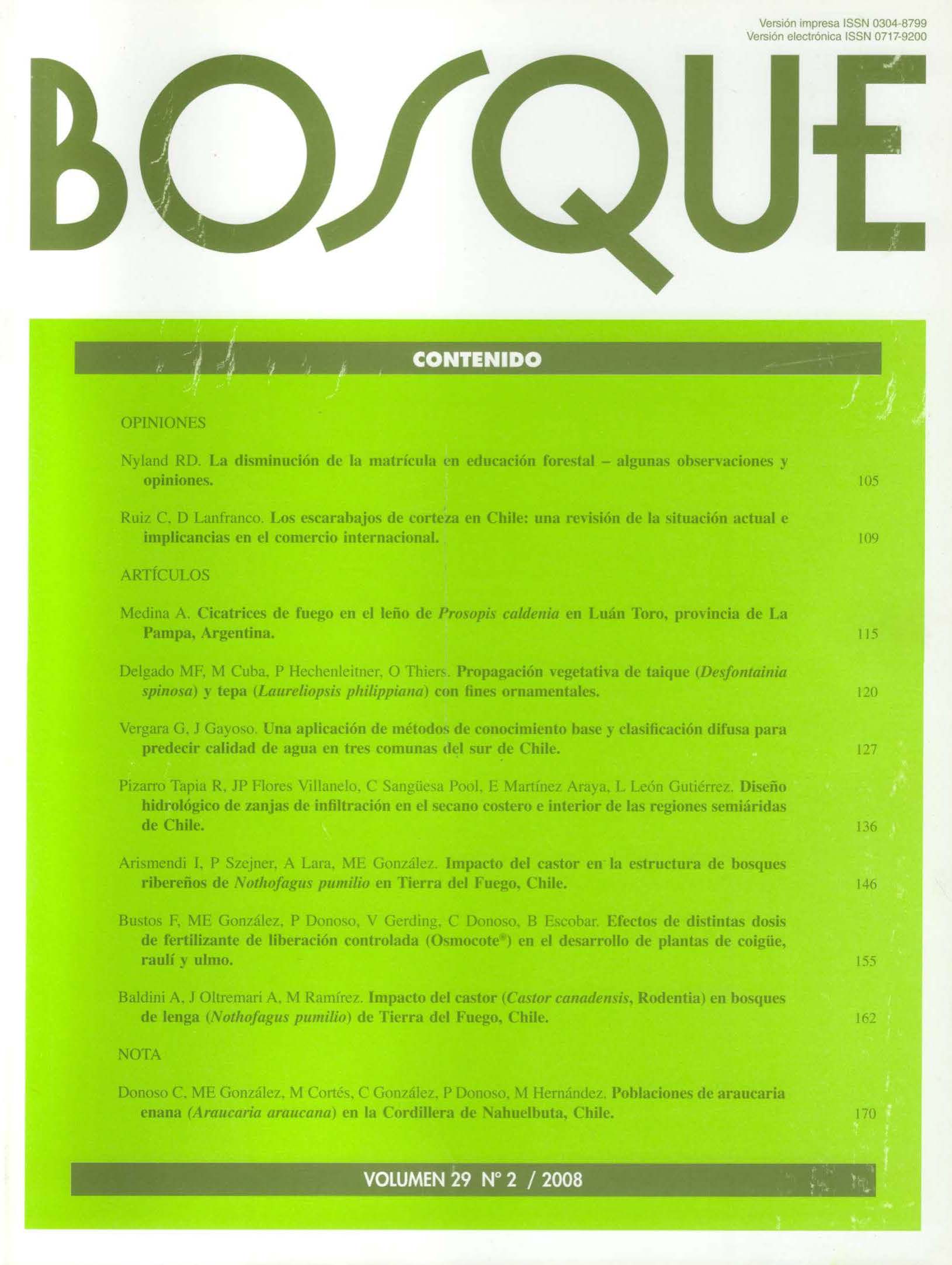Main Article Content
Aug 29, 2008
Abstract
Taique (Desfontainia spinosa) and tepa (Laureliopsis philippiana) are both highly ornamental native species from Chile. In order to investigate the capacity of vegetative propagation of these species, different concentrations of indolbuturic acid (IBA) with different types of cuttings were tested. The study was carried out inside a greenhouse with intermittent misting system. Cuttings were placed on a hot propagation bed at a temperature of 22 ± 2º C. A mixture of Sphagnum and perlite (1:1) was used as propagation substrate. IBA concentrations of 0-1,000-2,500 and 4,000 ppm were tested for apical and subapical cuttings of taique. Concentrations of 0, 1,000, 2,000, 3,000, and 4,000 ppm were tested for apical cuttings of tepa. Main results indicated that taique can be propagated easily by cuttings collected during winter time using IBA at concentrations between 1,000-4,000 ppm (67-82% of rooting succeeded), no matter the type of cutting used. Tepa showed a greater difficulty in rooting capacity than taique when propagated by cuttings. Results showed values of propagation percentage from 6.7% for cuttings without hormone, up to 33% for cuttings with a concentration of 4,000 ppm of AIB.


